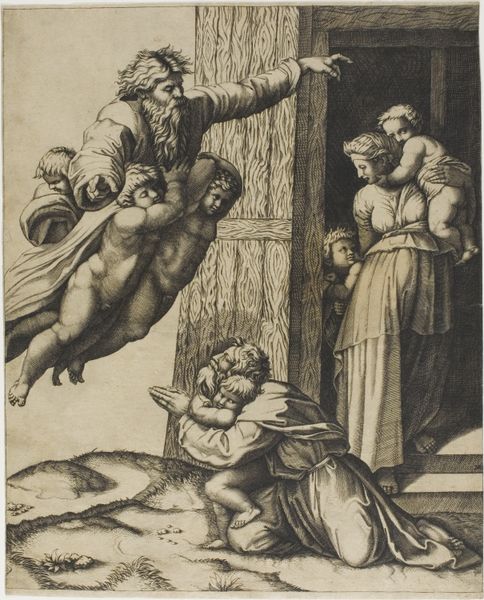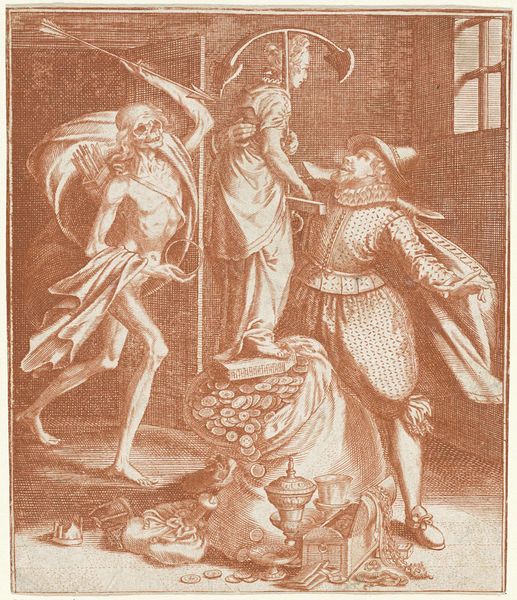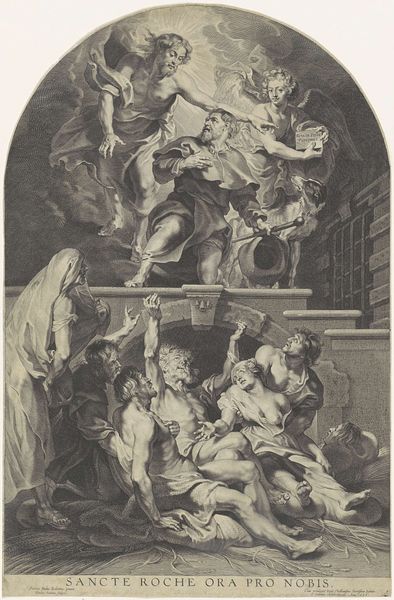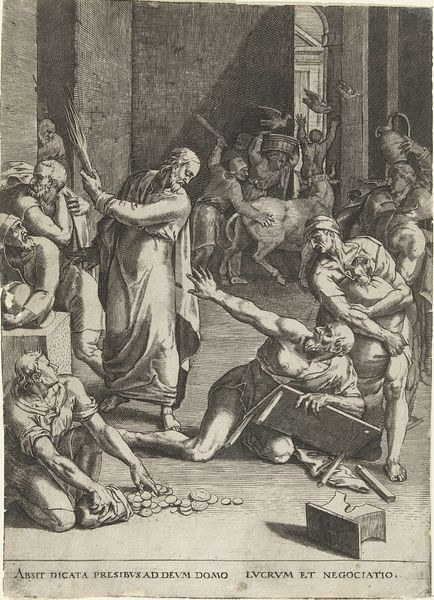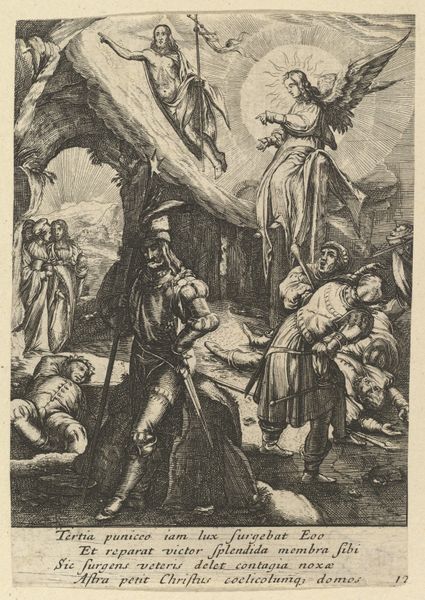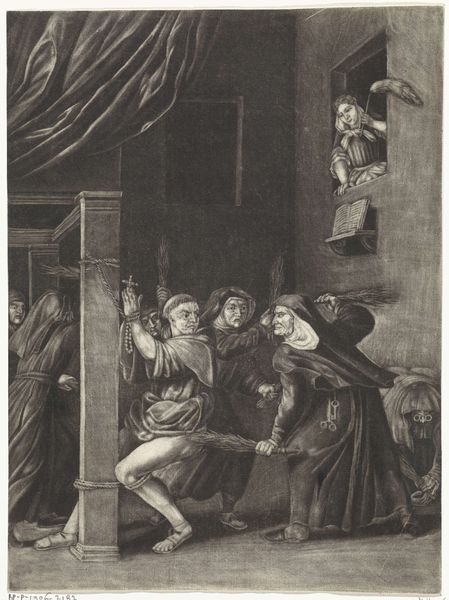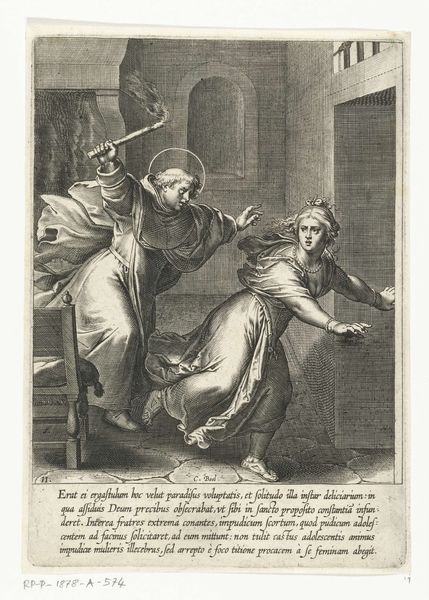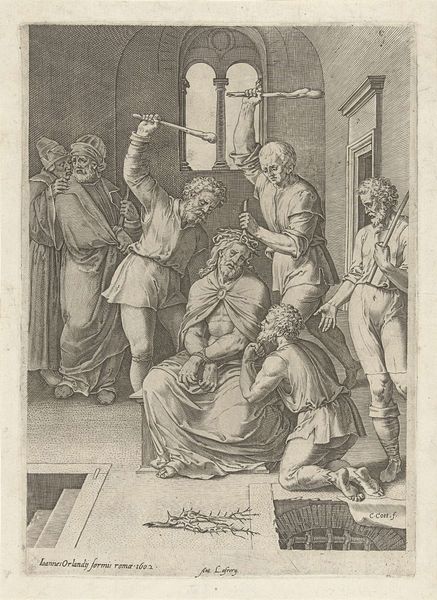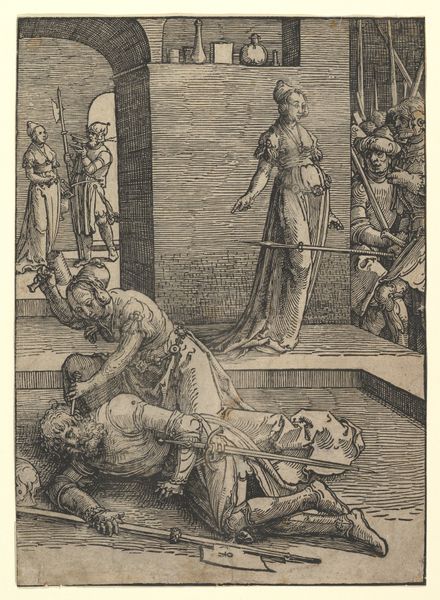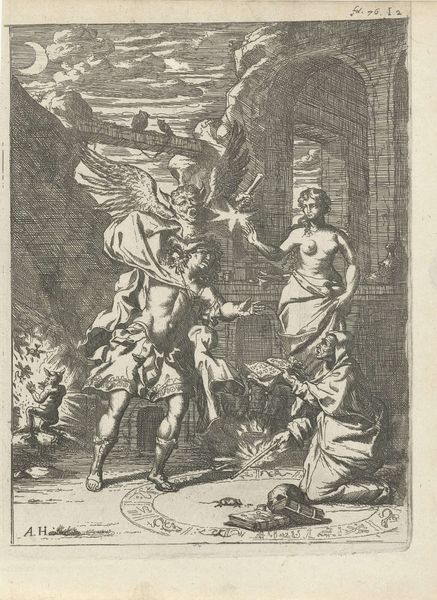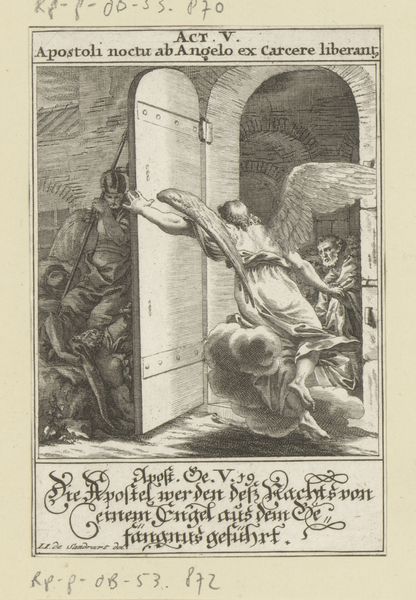
print, engraving
#
medieval
# print
#
figuration
#
history-painting
#
engraving
Dimensions: height 337 mm, width 257 mm
Copyright: Rijks Museum: Open Domain
Editor: Here we have "God Appears to Noah After the Flood," a 16th-century engraving currently housed in the Rijksmuseum. The weight of the figures and the use of shadow immediately grab your attention, making it a dramatic interpretation of this scene from the Bible. How would you interpret this image? Curator: Immediately, I see a representation deeply embedded in a tradition of visually interpreting sacred text. Consider the weight of God's figure, literally supported by cherubs, acting as both a divine presence and a visual declaration of power. What emotions do the reactions of Noah and his family evoke in you? Editor: There's definitely awe, maybe a bit of fear. Noah is on his knees, head bowed, while the family huddle at the door, unsure how to react. It strikes me as the contrast of old tradition bowing down to a more modern one. Curator: The positioning, even in the background, speaks to a lineage of symbolic visual communication. God emerging with child-like figures symbolizes purity, forgiveness, a new covenant, quite different from a more aged view on life, which in turn adds weight to Noah and his family at the doorstep, steeped in worldly sin. Editor: So the artist is using recognizable visual cues, playing with contrasts and historical meaning to enhance the narrative of the piece? Curator: Precisely. And by understanding those visual traditions, the engraving is charged by their history; we access more of its narrative power, tapping into deeply entrenched cultural memory. Consider this – each element is not just seen, but *read*. What is this “reading” accomplishing here? Editor: It gives a depth to the narrative beyond just the biblical story, it suggests the ongoing struggle between human frailty and divine grace. Curator: Exactly. Through recognizable visual symbolism, this artwork provides a connection to themes resonating throughout centuries, a testament to art’s enduring role in reflecting and shaping our understanding of faith. Editor: Thank you! I have a better understanding of how artists communicate ideas by tapping into commonly held imagery and historical context.
Comments
No comments
Be the first to comment and join the conversation on the ultimate creative platform.

